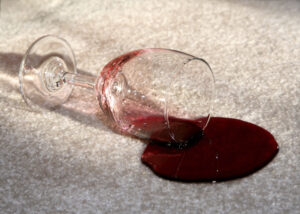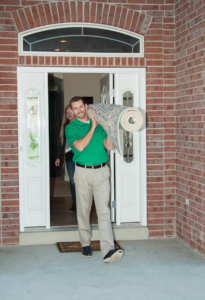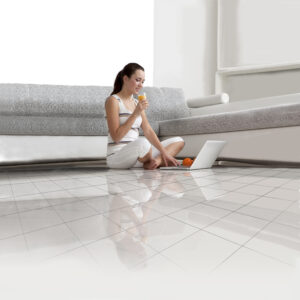Nothing elevates the ambiance of a home more than the inviting scent of fresh and clean upholstery. Over time, however, our beloved furniture can absorb odors, leaving behind a less-than-pleasant atmosphere. Professional upholstery cleaning services in Snohomish County help maintaining the freshness of your furniture. However, instead of relying on commercial sprays loaded with chemicals, why not explore the world of DIY upholstery fresheners? In this guide, we’ll delve into natural and effective ways to keep your furniture smelling sweet, using simple ingredients that are likely already in your pantry.
15 Natural Ways to Keep Furniture Smelling Sweet
Transform your living space into a fragrant haven with our guide on 15 natural ways to keep furniture smelling sweet. Say goodbye to artificial scents and dive into the world of DIY upholstery fresheners, where simple ingredients and the power of nature combine to elevate the ambiance of your home.
-
Understanding Odor Absorption: The First Step to Freshness
Before we embark on creating DIY upholstery fresheners, it’s crucial to understand why upholstery can develop odors. Fabrics absorb smells from the environment, whether it’s cooking odors, pet scents, or just the general wear and tear of daily life. To combat these unwanted odors, we turn to nature’s aromatic arsenal.
-
Baking Soda: The Odor Neutralizer Extraordinaire
Baking soda is a powerhouse when it comes to neutralizing odors. It works by absorbing and eliminating unwanted smells rather than just masking them. To create a simple baking soda upholstery freshener, sprinkle a generous amount onto your furniture, let it sit for at least 15 minutes, and then vacuum it up. Add a few drops of essential oil like lavender or eucalyptus to the baking soda for a pleasant fragrance boost.
-
Citrus Infusion: Zest Up Your Upholstery
Citrus fruits not only add a refreshing flavor to your meals but also contribute a vibrant aroma to your upholstery like professional upholstery cleaning services in Snohomish County. To make a citrus-infused upholstery freshener, mix equal parts water and citrus juice (lemon, orange, or grapefruit work well). Pour the mixture into a spray bottle and lightly mist your furniture. The acidity in citrus helps break down odors, while the fresh scent lingers.
-
Herbal Elegance: Lavender and Beyond
Herbs don’t just belong in the kitchen; they can also work wonders as natural deodorizers. Lavender, known for its calming properties, is a popular choice. Create a simple herbal upholstery freshener by placing dried lavender in small sachets and tucking them into the corners of your furniture. Alternatively, mix dried herbs like rosemary or mint with baking soda for an aromatic powder.
-
Essential Oil Elegance: Aromatherapy for Your Furniture
Essential oils offer a wide array of scents like professional upholstery cleaning services in Snohomish County, each with its own set of therapeutic benefits. Create an essential oil spray by mixing a few drops of your favorite essential oil with water in a spray bottle. Notable choices include tea tree oil for its antibacterial properties, eucalyptus for a fresh and invigorating scent, and chamomile for a soothing aroma.
-
Vodka Magic: Odor Neutralization with a Kick
Vodka might be an unexpected hero in the battle against odors, but its high alcohol content makes it an effective odor neutralizer. Mix equal parts vodka and water in a spray bottle, add a few drops of your preferred essential oil, and lightly spritz your upholstery. As the alcohol evaporates, it takes odors with it, leaving behind a subtle fragrance.
-
Activated Charcoal: Absorbing Odors at the Molecular Level
Activated charcoal is renowned for its exceptional ability to absorb impurities, making it a fantastic natural deodorizer. Place small bowls of activated charcoal around your furniture, and let it work its magic by absorbing and trapping odors. Remember to replace the charcoal every few weeks to maintain its efficacy.
-
Tea Time Freshness: Repurposing Used Tea Bags
After enjoying a cup of tea, don’t throw away the used tea bags just yet. Allow them to cool, then place them on a plate or tray and leave them on your upholstery. The natural tannins in tea can help neutralize odors, and the residual tea fragrance adds a subtle, pleasant scent.
-
Vanilla Infusion: Sweet Fragrance with a Twist
The sweet, comforting scent of vanilla can transform your upholstery into a cozy haven like professional upholstery cleaning services in Snohomish County do. Create a vanilla-infused spray by mixing water with a few drops of vanilla extract. Lightly mist your furniture, and let the subtle vanilla aroma linger.
-
Rose Water Elegance: A Floral Touch for Upholstery
Rose water, derived from rose petals, offers a delicate floral scent that can elevate the freshness of your furniture. Mix rose water with water in a spray bottle and lightly mist your upholstery. This not only imparts a lovely fragrance but also adds a touch of elegance.
-
Cloves and Cinnamon: A Spicy Blend of Comfort
Create a warm and inviting ambiance by incorporating the rich scents of cloves and cinnamon. Combine ground cinnamon and whole cloves and place the mixture in small sachets. Tuck these sachets into the nooks and crannies of your furniture for a cozy, spiced fragrance.
-
Coconut Oil Elixir: Tropical Freshness for Upholstery
Coconut oil not only boasts moisturizing properties but also carries a tropical, pleasant scent. Create a coconut oil upholstery freshener by mixing melted coconut oil with a few drops of your favorite essential oil. Allow the mixture to solidify, then use a soft cloth to apply it sparingly to your furniture for a subtle tropical aroma.
-
Cedar Wood: Natural Insect Repellent with a Bonus Fragrance
Cedar wood is renowned for its insect-repelling properties, making it an excellent addition to your upholstery freshening routine. Place cedar wood chips or blocks strategically around your furniture to deter pests while imparting a natural, woody fragrance.
-
Homemade Potpourri: A Visual and Fragrant Delight
Combine dried flowers, herbs, and spices to create your own potpourri blend. Display it in decorative bowls or sachets on your upholstery for both a visual and aromatic treat. Customize the blend based on your preferred scents, creating a unique potpourri signature for your home.
-
Linen Spray: A Refreshing Mist for Your Furniture
Craft a linen spray using distilled water and a few drops of your favorite essential oil. Shake well and lightly mist your upholstery. This versatile spray not only freshens furniture but can also be used on curtains, linens, and even in your closet.
Conclusion: A Breath of Freshness for Your Living Space
Upholstery fresheners need not be laden with artificial chemicals when nature provides a myriad of aromatic solutions. One can avail upholstery cleaning services in Snohomish County to maintain freshness in their furniture. However, by incorporating these DIY techniques into your cleaning routine, you not only infuse your furniture with natural fragrances but also contribute to a healthier and more environmentally conscious home. Experiment with different combinations, discover your favorite scents, and let the sweet fragrance of nature embrace your living space. After all, a sweet-smelling home is a happy home.









